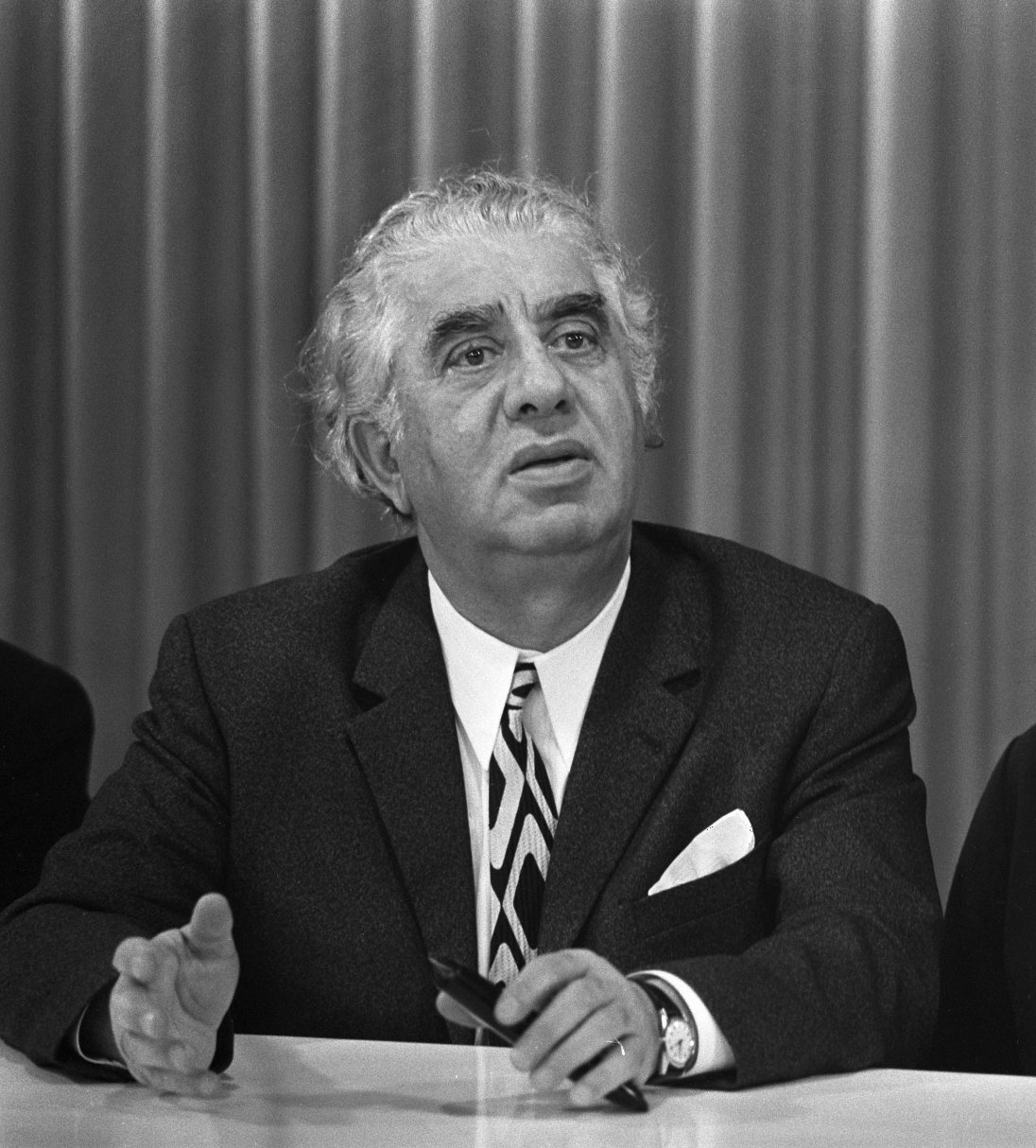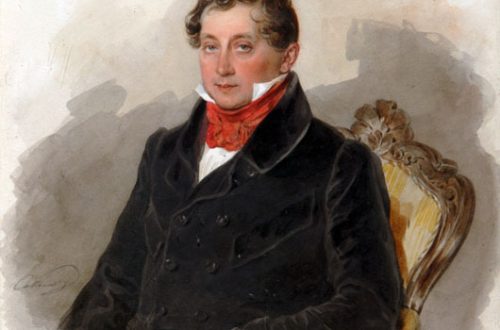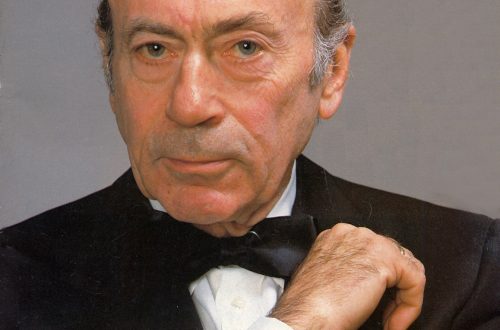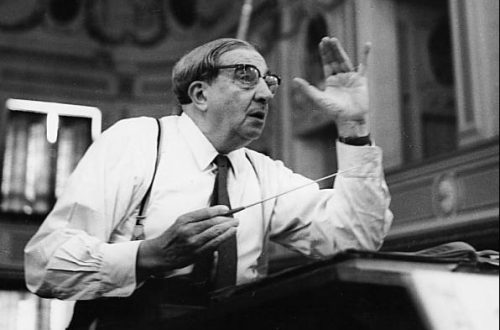
Aram Khachaturian |
Aram Khachaturian
… Aram Khachaturian’s contribution to the music of our days is great. It is difficult to overestimate the importance of his art for Soviet and world musical culture. His name has won the widest recognition both in our country and abroad; he has dozens of students and followers who develop those principles to which he himself always remains true. D. Shostakovich
The work of A. Khachaturian impresses with the richness of figurative content, the breadth of the use of various forms and genres. His music embodies the high humanistic ideas of the revolution, Soviet patriotism and internationalism, themes and plots depicting the heroic and tragic events of distant history and modernity; vividly imprinted colorful images and scenes of folk life, the richest world of thoughts, feelings and experiences of our contemporary. With his art, Khachaturian sang with inspiration the life of his native and close to him Armenia.
The creative biography of Khachaturian is not quite usual. Despite the bright musical talent, he never received an initial special musical education and professionally joined the music only at the age of nineteen. The years spent in old Tiflis, the musical impressions of childhood left an indelible mark on the mind of the future composer and determined the foundations of his musical thinking.
The richest atmosphere of the musical life of this city had a strong influence on the composer’s work, in which Georgian, Armenian and Azerbaijani folk tunes sounded at every step, improvisation of singer-storytellers – ashugs and sazandars, traditions of eastern and western music intersected.
In 1921, Khachaturian moved to Moscow and settled with his older brother Suren, a prominent theatrical figure, organizer and head of the Armenian drama studio. The bubbling artistic life of Moscow amazes the young man.
He visits theaters, museums, literary evenings, concerts, opera and ballet performances, eagerly absorbs more and more artistic impressions, gets acquainted with the works of world musical classics. The work of M. Glinka, P. Tchaikovsky, M. Balakirev, A. Borodin, N. Rimsky-Korsakov, M. Ravel, K. Debussy, I. Stravinsky, S. Prokofiev, as well as A. Spendiarov, R. Melikyan, etc. . to one degree or another influenced the formation of Khachaturian’s deeply original style.
On the advice of his brother, in the fall of 1922, Khachaturian entered the biological department of Moscow University, and a little later – at the Music College. Gnesins in the cello class. After 3 years, he leaves his studies at the university and devotes himself entirely to music.
At the same time, he stops playing the cello and is transferred to the composition class of the famous Soviet teacher and composer M. Gnesin. Trying to make up for lost time in his childhood, Khachaturian works intensively, replenishes his knowledge. In 1929 Khachaturian entered the Moscow Conservatory. In the 1st year of his studies in composition, he continued with Gnesin, and from the 2nd year N. Myaskovsky, who played an extremely important role in the development of Khachaturian’s creative personality, became his leader. In 1934, Khachaturian graduated with honors from the conservatory and continued to improve in graduate school. Written as a graduation work, the First Symphony completes the student period of the composer’s creative biography. Intensive creative growth gave excellent results – almost all the compositions of the student period became repertoire. These are, first of all, the First Symphony, the piano Toccata, the Trio for clarinet, violin and piano, the Song-poem (in honor of the ashugs) for violin and piano, etc.
An even more perfect creation of Khachaturian was the Piano Concerto (1936), created during his postgraduate studies and brought the composer worldwide fame. Work in the field of song, theater and film music does not stop. In the year of the concert’s creation, the film “Pepo” with music by Khachaturian is shown on the screens of the country’s cities. Pepo’s song becomes a favorite folk melody in Armenia.
During the years of study at the musical college and the conservatory, Khachaturian constantly visits the House of Culture of Soviet Armenia, this played an important role in his biography. Here he becomes close to the composer A. Spendiarov, the artist M. Saryan, the conductor K. Saradzhev, the singer Sh. Talyan, the actor and director R. Simonov. In the same years, Khachaturian communicated with outstanding theater figures (A. Nezhdanova, L. Sobinov, V. Meyerhold, V. Kachalov), pianists (K. Igumnov, E. Beckman-Shcherbina), composers (S. Prokofiev, N. Myaskovsky ). Communication with the luminaries of the Soviet musical art greatly enriched the spiritual world of the young composer. Late 30s – early 40s. were marked by the creation of a number of remarkable works of the composer, included in the golden fund of Soviet music. Among them are the Symphonic Poem (1938), Violin Concerto (1940), music for Lope de Vega’s comedy The Widow of Valencia (1940) and M. Lermontov’s drama Masquerade. The premiere of the latter took place on the eve of the beginning of the Great Patriotic War on June 21, 1941 at the Theater. E. Vakhtangov.
From the very first days of the war, the volume of social and creative activity of Khachaturian increased significantly. As deputy chairman of the Organizing Committee of the Union of Composers of the USSR, he noticeably intensifies the work of this creative organization to solve the responsible tasks of wartime, performs with the display of his compositions in units and hospitals, and takes part in special broadcasts of the Radio Committee for the front. Public activity did not prevent the composer from creating in these tense years works of various forms and genres, many of which reflected military themes.
During the 4 years of the war, he created the ballet “Gayane” (1942), the Second Symphony (1943), music for three dramatic performances (“Kremlin Chimes” – 1942, “Deep Intelligence” – 1943, “The Last Day” – 1945), for the film “Man No. 217” and on its material Suite for two pianos (1945), suites were composed from the music for “Masquerade” and the ballet “Gayane” (1943), 9 songs were written, a march for a brass band “To Heroes of the Patriotic War” (1942) , Anthem of the Armenian SSR (1944). In addition, work began on a Cello Concerto and three concert arias (1944), completed in 1946. During the war, the idea of a “heroic choreodrama”—the ballet Spartacus—began to mature.
Khachaturian also addressed the theme of war in the post-war years: music for the films The Battle of Stalingrad (1949), The Russian Question (1947), They Have a Homeland (1949), Secret Mission (1950), and the play South Node (1947). Finally, on the occasion of the 30th anniversary of the Victory in the Great Patriotic War (1975), one of the composer’s last works, Solemn Fanfares for trumpets and drums, was created. The most significant works of the war period are the ballet “Gayane” and the Second Symphony. The premiere of the ballet took place on December 3, 1942 in Perm by the forces of the evacuated Leningrad Opera and Ballet Theatre. S. M. Kirov. According to the composer, “the idea of the Second Symphony was inspired by the events of the Patriotic War. I wanted to convey feelings of anger, revenge for all the evil that German fascism caused us. On the other hand, the symphony expresses moods of sorrow and feelings of the deepest faith in our final victory.” Khachaturian dedicated the Third Symphony to the victory of the Soviet people in the Great Patriotic War, timed to coincide with the celebration of the 30th anniversary of the Great October Socialist Revolution. In accordance with the plan – a hymn to the victorious people – an additional 15 pipes and an organ are included in the symphony.
In the post-war years, Khachaturian continued to compose in various genres. The most significant work was the ballet “Spartacus” (1954). “I created music in the same way that composers of the past created it when they turned to historical topics: keeping their own style, their style of writing, they told about events through the prism of their artistic perception. The ballet “Spartacus” appears to me as a work with sharp musical dramaturgy, with widely developed artistic images and specific, romantically agitated intonational speech. I considered it necessary to involve all the achievements of modern musical culture in order to reveal the lofty theme of Spartacus. Therefore, the ballet is written in a modern language, with a modern understanding of the problems of the musical and theatrical form,” Khachaturian wrote about his work on the ballet.
Among other works created in the post-war years are “Ode to the Memory of V. I. Lenin” (1948), “Ode to Joy” (1956), written for the second decade of Armenian art in Moscow, “Greeting Overture” (1959) for the opening of XXI Congress of the CPSU. As before, the composer shows a lively interest in film and theater music, creates songs. In the 50s. Khachaturian writes music for B. Lavrenev’s play “Lermontov”, for Shakespeare’s tragedies “Macbeth” and “King Lear”, music for the films “Admiral Ushakov”, “Ships storm the bastions”, “Saltanat”, “Othello”, “Bonfire immortality”, “Duel”. The song “Armenian drinking. Song about Yerevan”, “Peace march”, “What children dream about”.
The post-war years were marked not only by the creation of new bright works in various genres, but also by important events in Khachaturian’s creative biography. In 1950, he was invited as a professor of composition at the same time at the Moscow Conservatory and at the Musical and Pedagogical Institute. Gnesins. Over the 27 years of his teaching activity, Khachaturian has produced dozens of students, including A. Eshpay, E. Oganesyan, R. Boyko, M. Tariverdiev, B. Trotsyuk, A. Vieru, N. Terahara, A. Rybyaikov, K. Volkov, M Minkov, D. Mikhailov and others.
The beginning of pedagogical work coincided with the first experiments in conducting his own compositions. Every year the number of author’s concerts grows. Trips to the cities of the Soviet Union are interspersed with tours to dozens of countries in Europe, Asia, and America. Here he meets with the largest representatives of the artistic world: composers I. Stravinsky, J. Sibelius, J. Enescu, B. Britten, S. Barber, P. Vladigerov, O. Messiaen, Z. Kodai, conductors L. Stokowecki, G. Karajan , J. Georgescu, performers A. Rubinstein, E. Zimbalist, writers E. Hemingway, P. Neruda, film artists Ch. Chaplin, S. Lauren and others.
The late period of Khachaturian’s work was marked by the creation of “Ballad of the Motherland” (1961) for bass and orchestra, two instrumental triads: rhapsodic concertos for cello (1961), violin (1963), piano (1968) and solo sonatas for cello (1974), violins (1975) and viola (1976); the Sonata (1961), dedicated to his teacher N. Myaskovsky, as well as the 2nd volume of the “Children’s Album” (1965, 1st volume – 1947) were written for the piano.
Evidence of the worldwide recognition of Khachaturian’s work is the awarding him with orders and medals named after the largest foreign composers, as well as his election as an honorary or full member of various music academies of the world.
The significance of Khachaturian’s art lies in the fact that he managed to reveal the richest possibilities of symphonizing oriental monodic thematics, to attach, together with the composers of the fraternal republics, the monodic culture of the Soviet East to polyphony, to genres and forms that had previously developed in European music, to show ways to enrich the national musical language . At the same time, the method of improvisation, the timbre-harmonic brilliance of oriental musical art, through the work of Khachaturian, had a noticeable influence on composers – representatives of European musical culture. Khachaturian’s work was a concrete manifestation of the fruitfulness of the interaction between the traditions of the musical cultures of the East and West.
D. Arutyunov





